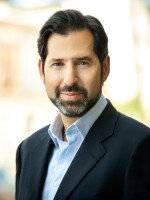The twists and turns of the Republican presidential campaign have been practically made for — and watched on — live television. And despite predictions of new media tools like Twitter and Facebook dominating election coverage, Americans are continuing to rely on an old standby: cable TV.
After coming in second in the Nevada caucuses, Newt Gingrich assured reporters that national news exposure would be a surefire remedy for catching up with Mitt Romney.
"I actually think we're a national system in terms of information flow. So I think if I'm on [Fox News'] Hannity, or if I happen to be in The Associated Press ... or if I'm one of the networks or even in the New York Times, that in fact it reaches the whole country," Gingrich said.
Indeed, a survey of more than 1,500 people by the Pew Research Center shows that more than one-third of Americans are leaning on cable channels for election news — just as many as in past years — while relying less on local television stations, newspapers and the national networks.
Social media has been much heralded but relatively little used by average voters.
And the new media kids on the block? The media may be fixated on them, says Andrew Kohut, president of the Pew Research Center, but the public is not.
"Social media has been much heralded but relatively little used by average voters and average citizens," he says.
According to the Pew study, only 2 percent of people sought election news from Twitter, 3 percent from YouTube and 6 percent from Facebook.
"These numbers are very modest given all that we've heard about the impact of social networks on this campaign," Kohut says.
General voter interest is down from 2008, in no small part because only one party has a competitive race this time. As younger voters skew Democratic, that may also have dampened the relative reliance on emerging social media platforms by those voters who are engaged. Cable news audiences are, on average, a lot older — in their late 50s and 60s, according to past estimates from Nielsen Media Research.
Obama campaign officials say their social media strategy is to mobilize supporters, engage donors and inspire backers to get the message out to other voters. In other words, it's narrowcasting. Even in the age of the right/left split of cable with Fox News and MSNBC, television news channels reach a lot of people who don't back a specific candidate and are looking for more information.
Digital media professionals argue that traditional measures like the Pew study are missing the point.
Amy Webb, CEO of the Webbmedia Group, says social media users are providing a growing body of information about voter preferences.
"What do women who shop at a grocery store on Sunday afternoons instead of Saturday mornings — who also happen to be executives and live in Chicago — think?" Webb says. "We can get really, really targeted now. And as crazy as all of this may seem, we are the ones providing all of this data."
Media critic William Powers recently joined the Boston-based digital media company Bluefin Labs to help assess the political conversations unfolding online. The 2012 campaign may not be decided by social media, Powers says, but those tools offer a wealth of information about the national mood.
"American presidential campaigns still occur largely on television — on the old medium," Powers says. "That's where the narrative takes place. And all this explosion on Twitter is largely people reacting to televised events."
Powers says Bluefin, founded by an MIT linguistics professor, is using a sophisticated algorithm to gauge how people react to political rhetoric by sorting through tweets in real time.
"We're in a position to make sense of the context," Powers says. "The context is debates and ads, and all these TV events that are going to make up much of the campaign. And Twitter is where the public is talking back to the TV."
Powers calls Twitter a focus group in the wild — hundreds of thousands of tweets, offering raw responses to each debate or speech, as seen on cable TV.
It is a layered conception of old and new media coexisting — like modern apartment buildings standing amid the ancient ruins in Rome.
Copyright 2021 NPR. To see more, visit https://www.npr.org.




